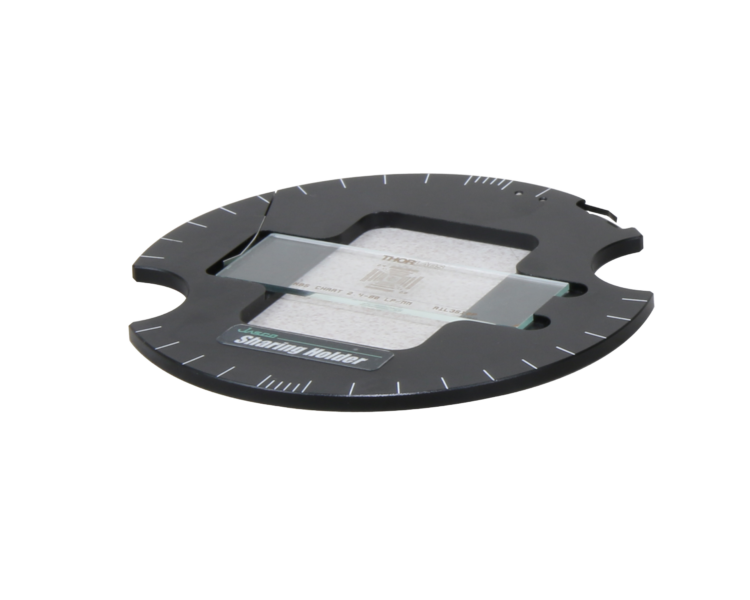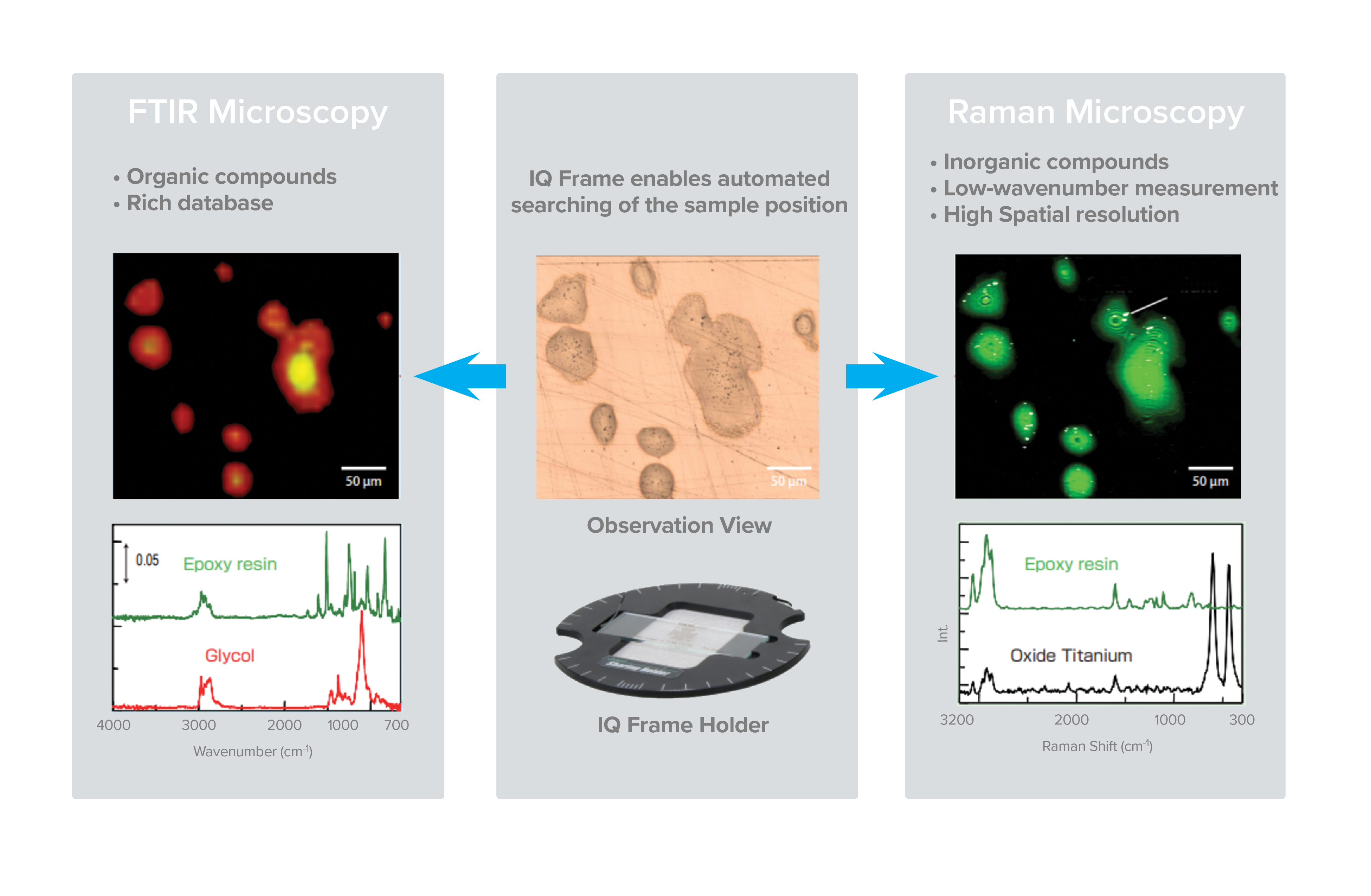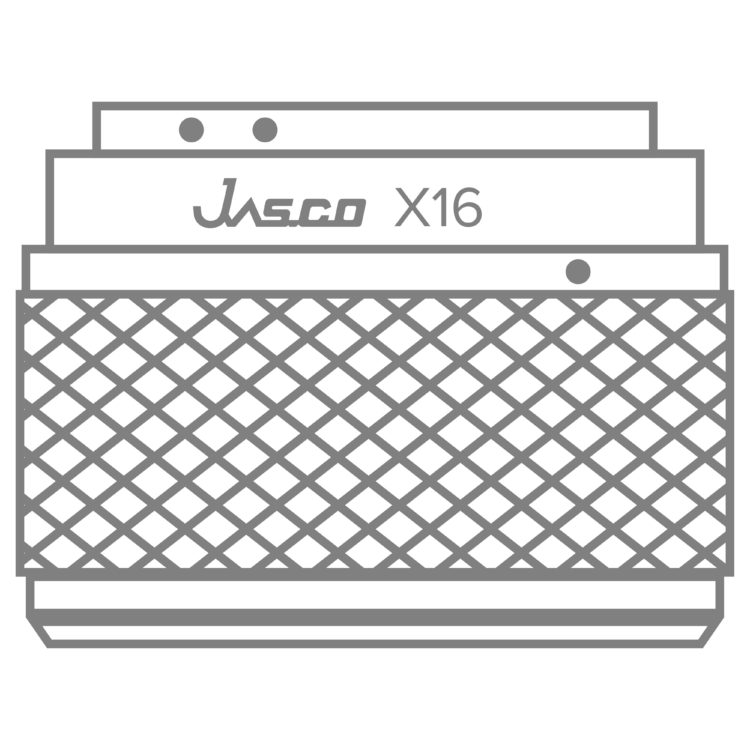The IQ Frame™ is designed for IR and Raman microscopy to make it easier to locate measurement positions either when switching between instruments or when returning to previously analyzed samples.
When a sample has been measured and analyzed on an instrument, the sample stage coordinates, and observation image are saved together in a reference file for transfer to another instrument for correlation of data or to reanalyze the same sample on the same instrument at any time in the future. To return to the same measurement area of a sample, locate the sample on the graduated mount and place the IQ Frame™ in the sample stage of the instrument. The reference file is used to find the stage coordinates and execute the AI image analysis to identify the exact area that was previously measured. The IQ Frame™ can be used with different magnification objective lenses to change the size of the viewing area.

Repeat Measurement
Repeat Measurement of a previously analyzed sample is often necessary for a variety of different reasons. The IQ Frame™ can be used to return to the exact same measurement area of a sample on the same instrument for repeat measurement. Reanalyzing a sample allows for further investigation, confirmation of initial findings, the ability to track changes over time or the discovery of additional details that might have been missed in the initial analysis. In addition, advancements in microscopy techniques and equipment may offer higher resolution, improved contrast, or additional imaging modalities. Some applications include reaction and environmental monitoring, degradation studies, stability testing, material characterization, forensic analysis, data reproducibility, method and instrument validation, and long-term research studies, etc.
Combining Data from IR and Raman Microscopy
The combination of data from FTIR and Raman microscopy can provide richer information about structure and chemical composition. IR spectroscopy is useful for the analysis of organic compounds while Raman spectroscopy is useful for the analysis of inorganic compounds and crystal structure because it has a higher spatial resolution compared to IR spectroscopy and can measure down to the low wavenumber region. The combination of data from IR and Raman microscopy can provide richer information about the structure and chemical composition of samples; however, the same minute region must be accurately measured by both methods.

Applications
-
Application
Development of a New Unique Concept for Accurate Sample Measurement across Different Microscope Based Molecular Spectroscopy System
Raman and infrared spectroscopy are well known as complementary techniques to study molecular structure and molecular function. In addition, UV-visible spectroscopy represents an optional orthogonal assessment. Although orthogonal assessment has been proven to be useful in quality analysis, it is a challenge to accurately synchronize the measuremen...
-
Application
Orientation measurement of polyethylene by polarized Raman spectroscopy
Figure 1. IQ Frame A plastic string like on the right has the property of easily deformed in one direction, but strong in another direction. This is due to orientation of polymer molecular chains in a certain direction, increasing the physical strength. Similarly, the orientation of polymer materials such as films and chemical fibers is closely r...
-
Application
Combined analysis of plastic particles by Infrared and Raman microscopy
Figure 1. IQ Frame Infrared microscopy (IR) and Raman microscopy are excellent methods for the analysis of molecular structure from molecular vibrations, each of these analytical method has its own distinct merits. On the one hand, there is a large database of IR spectra for organic substances, a major attraction to users when identifying unknown f...



